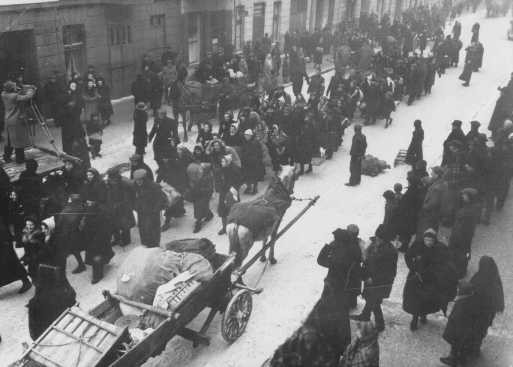
Rut Berlinska
The Jewish children of Lodz suffered unfolding harsh realities after the German invasion of Poland. Some of the children, among them Rut Berlinska, recorded their experiences in diaries. Their voices offer a view into the struggle of a community and its young to live in spite of the most difficult circumstances.
Diary Excerpt
“We sewed small dresses, houndstooth pattern. For two years same cut, same dress. I sewed sleeves, small sleeves with a cuff.”
—Rut Berlinska, age 13
Rut's Story
Rut Berlinska was 11 years old when World War II broke out. She, her older brother Salek, and their parents moved in with Rut's maternal grandparents. The family was well off before the war and they had some food stored away, but it didn't last long.
After the family was forced to move into the Lodz ghetto, Rut attended school in the ghetto. She was in the sixth grade and her homeroom teacher was Miss Lena Kagan, the math teacher. Rut's real hero was her brother Salek. He taught her about literature and poetry and helped her with sciences.
After closing of the schools Rut, who was 13 years old, went to work in a dressmaking factory. She received an additional bowl of soup there. In August 1944, Rut and her family were deported to Auschwitz-Birkenau. Both of her parents and her brother were murdered, but Rut survived and returned to Lodz, where she found out that her grandmother and her uncle had survived.
Critical Thinking Questions
Why are diaries an important part of the historical record?
What makes children’s diaries distinct?
How are some of these accounts different from that of Anne Frank?
Investigate the experiences of children in the ghettos.

